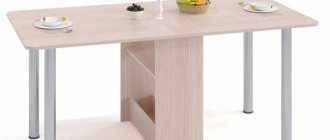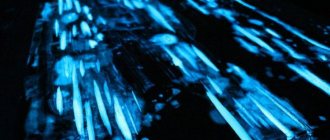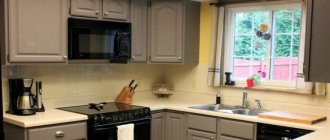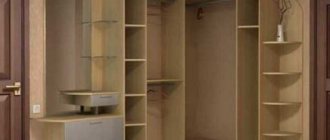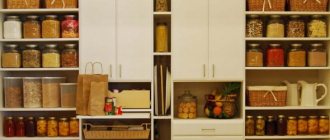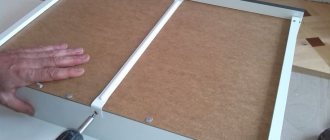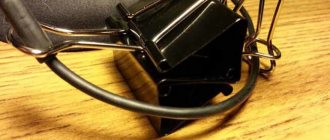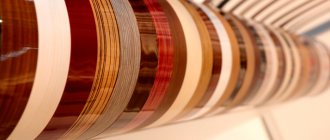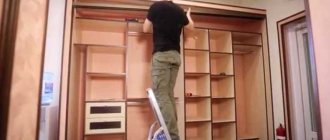0
92588
In order to hide scratches and defects received during the use of furniture or to renew the surfaces of facades and panels, a special film is used. It is durable, has an attractive appearance and a rich color palette. To figure out how to glue self-adhesive film to furniture, you need to consider in detail its features and application methods.
Types of self-adhesive film
Depending on various features, films are divided into different types. According to manufacturing technology, they are of two types:
- calendered;
- cast.
The first ones are made from vinyl using a special machine called calender machines. They represent a complex system of rollers through which raw materials pass. As a result, it is given the desired shape and thickness, and the output is a finished film.
Cast ones are made on simpler machines, which usually have no more than three rollers. They have worse characteristics (in particular, they are less durable). However, the cost of such materials is lower because their production requires less raw materials. Most often they are made of polyvinyl chloride (PVC).
Depending on the number of layers, films are divided into:
- three-layer;
- multilayer.
Three-layer consist of 3 layers:
- The basis. It is a layer of polymer material that makes up the main part of the material. A drawing is usually applied to the base.
- Protective layer. It is a thin film that protects the base from mechanical damage.
- Adhesive layer. It is a sticky substance applied to the back of the base. Provides adhesion to treated surfaces.
Depending on the purpose of the film there are:
- furniture;
- glass
Furniture coatings are an opaque, relatively thick coating. Most often it imitates the pattern of solid wood. However, other types of patterns are also widespread: stone, tile, even texture, painted in any color. The material is intended for gluing furniture and wood.
Glass ones are intended for gluing transparent surfaces. They can be glass interior doors, windows, mirrors. Such films are transparent and often have some tint (for example, light blue). Often patterns are placed on them that are intended to change the appearance of a window or mirror, decorate it, or decorate it. The film also plays a purely utilitarian role - it protects the glass surface from mechanical damage and prevents scratches.
Depending on the type of surface, films are divided into the following types.
- Glossy. As the name implies, they have a shiny glossy surface.
- Matte. They have a matte surface. Can be decorated to look like wood or stone.
- Mirrored. The surface of this type of material is capable of reflecting other objects.
- Holographic. They have a pattern that creates the illusion of a three-dimensional object.
As for raw materials, the material can be made from:
- PFC;
- vinyl;
- polyester;
- propylene.
Self-adhesive film for furniture
Necessary care
This film does not require too much maintenance. It is enough to follow the recommended rules:
- If the canvas gets dirty, it can be easily fixed with ethyl alcohol.
- Do not use gasoline or similar substances to clean the surface.
- Do not use abrasive substances.
- If the glue goes beyond the edges, then the remaining compound should be wiped off with a rag soaked in ethyl alcohol.
As for painting these products, such work is not recommended. The fact is that the products will not adhere well to the surface of the self-adhesive film.
You can watch the video to see how to install the film on glass and remove bubbles:
Noticed a mistake? Select it and press Ctrl+Enter to let us know.
Advantages and disadvantages
The advantages of film include the following.
- Availability. Film costs much less than new furniture or repairing old furniture. One roll of 10 meters will cost only 300 - 400 rubles.
- Ease of operation. For gluing you do not need to have any special knowledge. It can be carried out by anyone.
- Effectiveness. After restoration, a piece of furniture acquires a completely new appearance. If the procedure is carried out correctly, it will look almost like new.
- Easy to clean. Unlike wooden surfaces, the film can be wiped with a damp cloth - it is not afraid of water. This makes dust removal much easier.
- Protection. The coating protects products made from solid wood or chipboard (chipboard) well. It prevents the adverse effects of moisture and direct sunlight. This significantly extends the life of the furniture.
What kind of furniture is it suitable for?
The material is suitable for any furniture made of any material. They can paste over:
- closet;
- kitchen set;
- table;
- dresser;
- door.
However, there are several important nuances to keep in mind.
- You should not paste over the top of an actively used table (for example, a dining table). The film on it will quickly be erased.
- In the kitchen it is worth covering only the facades of the furniture. It is better not to treat the side parts located near the stove or gas water heater. High temperatures will quickly cause the coating to peel off or even become deformed.
How to stick self-adhesive film
For pasting you will need the following materials:
- the film itself;
- solvent (you can take acetone or 646);
- glue (Moment will do).
You will also need tools:
- knife or scissors;
- roulette;
- marker or pencil;
- putty knife;
- a pair of soft rags made of natural fabric (for example, cotton or linen).
In order to stick the coating on furniture, you will need to perform the following steps.
- Prepare the surface. The adhesive layer will only attach securely if the surface to be treated is well prepared. First you need to clean off all the unevenness, remnants of old decor, and dirt with a spatula. Then the surface must be degreased. To do this, apply a little solvent to a cloth and wipe the product to be treated in the areas where it is glued. If possible, avoid touching the wiped parts with your hands. Otherwise, the results of degreasing will come to naught.
- Preparing the coating. The item to be pasted is measured with a tape measure. Then, pieces suitable in area for a particular area are cut out of the film roll. It is better not to make too large segments. In the future, it will be difficult to apply them evenly and smooth them out.
- Pasting. The protective coating of the adhesive layer is slightly removed from a previously prepared piece of material. A narrow adhesive strip is evenly glued to the top of the object being processed. Gradually removing the protective coating, the material is leveled on the furniture. In this case, it is necessary to carefully ensure that the material lays down without folds or bubbles. To avoid their appearance, the procedure must be performed very slowly.
- Smoothing. After gluing, the material will inevitably lag behind in some places, forming small irregularities and bubbles. They need to be smoothed with a second cloth. To do this, rub the irregularities with light pressure until they completely disappear. At the same time, air bubbles are “driven” to the edges of the coating so that they can escape freely.
- Gluing. The coating will come off in some places (for example, in small corners). Even its own sticky surface will not hold it. In these places, the material is carefully glued with Moment glue.
How to remove film from a surface
Sometimes it is necessary to cover objects that already have film on them. Of course, before starting work, it must be removed. This can be done in two ways:
- construction hairdryer;
- sticker remover.
To remove with a construction hairdryer, a certain area of the surface is heated, and then the old decor is removed with a spatula. It is important not to reach too high a temperature, as this could damage the piece of furniture being treated. If you don’t have a hair dryer at hand, at worst, a regular hair dryer will do. It also copes with the task of removing film, although somewhat worse.
When using chemicals, the substance is applied with a spray bottle or a cloth to the old material, left for 15 - 20 minutes, and then also removed with a spatula. WD-40 can be used as a removing compound. Solvents (acetone, white spirit) are also used. True, they sometimes corrode the coating completely, which is why it can become embedded in the wooden surface. Therefore, when using solvents you need to be very careful.
Wallpaper
You've probably heard more than once that various interior items are decorated with wallpaper. How many master classes have you seen on TV from designers of all stripes, because each of them considers it their duty to give a second life to some household item.
This is most often done with high-quality vinyl or non-woven wallpaper, since it is extremely difficult to work with paper options, and you have to work hard to get at least a satisfactory result.
Therefore, if you still have wallpaper, before you get involved in pasting surrounding objects, make sure of the quality of the finishing material.
Our choice of color and texture is also limited, since we work with residual material, but if you want to buy a new roll for these purposes, then proceed from the general design of the room and your taste guidelines.
Decorating kitchen furniture with wallpaper
It is quite acceptable to cover the furniture in the room with canvases with the same pattern as on the walls. Such an interior will look quite harmonious and holistic. If you need to use a different type of wallpaper, then do not forget about the overall design concept of the room.
The use of simple design solutions will create a more harmonious interior. For example, if the room is decorated in light colors, then it is best to use dark or bright options for covering the cabinets. If the walls in the room are covered with wallpaper with ornaments, then in order to avoid overloading the interior, the furniture is covered with plain canvases. The interior decoration of the cabinet, made to match the walls of the room, will look very cool.
Related article: Do-it-yourself ceiling finishing with liquid wallpaper (photo)
A good option for decorating cabinets is imitation of other finishing materials, wood, brick, leather, stone. Such vinyl wallpapers are often used to decorate various rooms and they naturally remain. In addition, such canvases have significant relief and a repeating pattern, which will help hide defects on the surface of the furniture.
Classic wardrobe decoration
In construction stores you can find special photo wallpapers designed for covering doors and cabinets. Usually these are paper versions that depict non-trivial scenes, less often a banal imitation of a wooden covering.
In fact, the easiest way to cover a wood-effect cabinet is with self-adhesive film, which comes in just these colors. German and Dutch film is more expensive and of better quality, Chinese film is cheaper, but the edges of this film often come off due to the poor quality of the adhesive composition.
Note that self-adhesive wallpaper can be plain or stained glass, if this option suits you, use it.
If you are going to wallpaper a kitchen cabinet or a nightstand in the hallway, it is advisable that the wallpaper be moisture-resistant for wet cleaning. You need to think about this in advance. Self-adhesive film has moisture-resistant qualities, like most vinyl wallpaper, but paper is weak.
Use of green and white colors that fit into the interior
If you only have paper scraps, in principle you can use them, but after pasting you will need to apply a layer of varnish to them, which will add gloss and protect the canvas from moisture.
Useful tips
Here are some useful tips regarding applying and caring for the material.
- You should always purchase material with a small reserve. Its size should be approximately 20% of the total amount of coverage. This will avoid trouble in case of errors.
- It is most convenient to cut the film along the internal markings. Usually it is in the form of squares with a side of 1x1 centimeter.
- To glue the corners, it is better to heat the material (with a construction hairdryer or a regular hairdryer). Otherwise, there is a high probability that the self-adhesive film will lie unevenly.
- Clean pasted furniture with a cloth soaked in soapy water. Do not use rough sponges - they can damage the material. The use of aggressive household chemicals is also not allowed.
- Before purchasing a decorative covering, look for photos or videos that show furniture covered with it. Sometimes the film may not adhere very well to the surfaces being treated. It is impossible to understand how good it is in the store.
Other stages
Film with a large pattern
How to glue self-adhesive film to furniture with patterns?
You should take the pattern and separate its top layer from the backing.
You should not immediately glue such a film tightly.
It is best to first apply this coating to the surface and find out whether its shape and size fit well with the selected part of the furniture or walls.
Experts recommend gluing this material little by little.
This means that you first need to apply the first 5 cm of such a canvas, then the next 5 cm, etc.
At each of these stages, the film should be distributed over the surface with gentle movements. At the same time, you need to constantly ensure that there are no creases or bubbles.
To do this, it must be ironed immediately using a dry cloth. In order to prevent bubbles from appearing on such finishing material, you should act according to the following principle.
Smoothing should be done from the center of the self-adhesive film to its edges. This is reminiscent of the process of applying wallpaper to a wall.
If the film suddenly swells in some places, its surface should be immediately leveled. This needs to be done before it can completely stick to it.
To do this, carefully peel off the film and re-glue it in the same place. If such a coating is applied to a bathroom wall, be sure to pre-coat its surface with wallpaper glue. The film should be glued while the mixture has not yet dried.
The fabric must be smoothed with a dry cloth. Directions of movement should go from the center in different directions.
